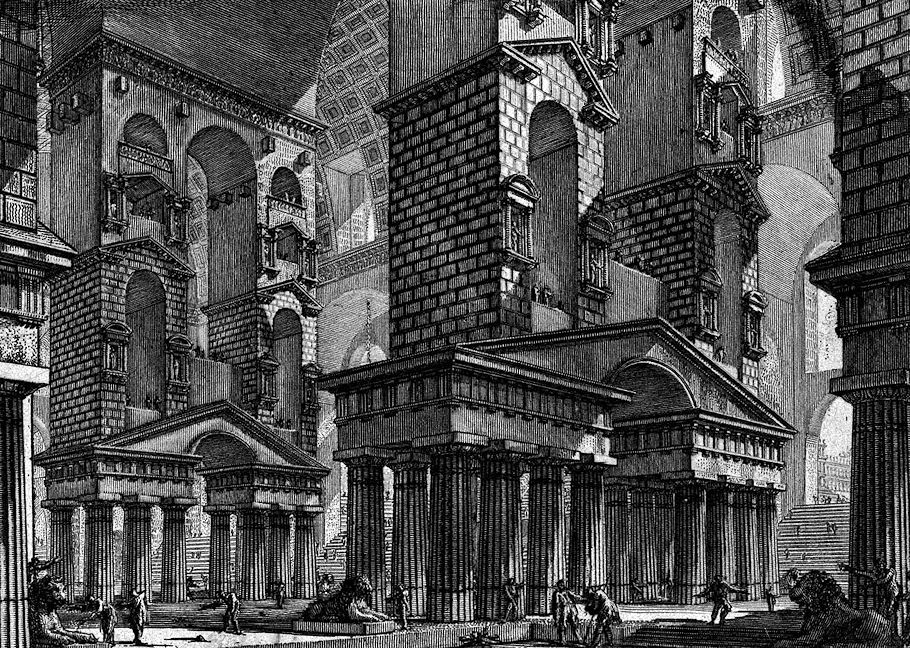piranesi |
1955 |
281. Piranesi, Opere varie, pl. 18. Focillon, Catalogue, no. 126. Bossert, "Phantastische Architekturen," ill. p. 34. Nikolaus Pevsner and S. Lang, "Apollo or Baboon," Architectural Review CIV (1948), ill. p. 276. | The characteristics of the designs in the Parere reappear in the etching inscribed Appartenenze d'antiche terme con scale che conducono alia palestra, e al teatro (probably dating from the 1750's).281 There are, once more, fantastic structures made up of incongruous elements: twin aedicules are superposed on multicolumned pedimented gateways. Only at closer inspection do we detect that these strange piles form the bases of piers from which arches rise. Piranesi was aware that the inconsistent combination of aedicules and gateways would not make sense, could they not be interpreted as parts of the piers. Thus, on second thought, he rationalized the pile of superposed structures in order to justify the weird composition. It seems that the idea underlying the design was not so much the definite concept of some building, but the vague concept of an entirely new order of disparate elements. There can be no doubt that the impressive composition emerged spontaneously from the depth of his artistic emotion. Whereas Guarini's "excesses" always remained within the framework of the Baroque system, Piranesi felt the urge to arrange the components in a new, free manner. |
|
|
|
|
|
|
|
|
|
www.quondam.com/53/5355r.htm | Quondam © 2021.08.15 |
